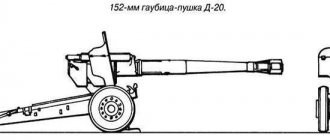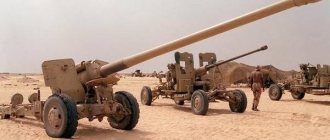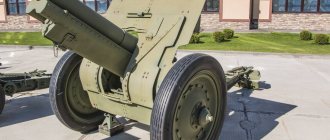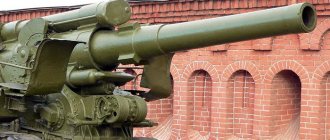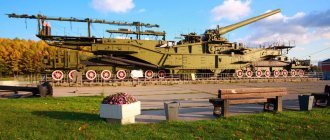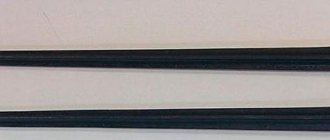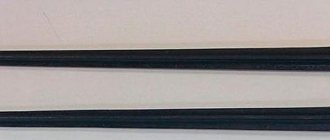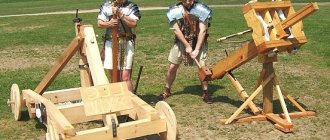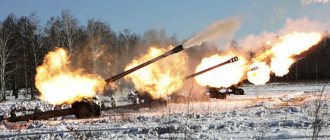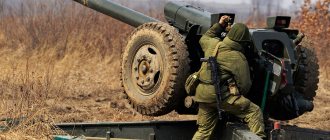Type of field howitzer
| 152 mm howitzer model 1909 | |
| Type | field howitzer |
| Place of origin | Russian empire |
| Service history | |
| Used | Russian Empire Soviet Union |
| Wars | World War I, Russian Civil War |
| Production history | |
| Designer | Schneider et Cie |
| Characteristics | |
| Barrel length | overall: 2.16 m (7 ft 1 in) L/14 Bore: 1.9 m (6 ft 3 in) L/13.1 |
| Caliber | 152.4 mm (6 in) |
| Breech | broken screw |
| Recoil | Hydropneumatic |
| Shipping | box trail |
| Height | 0° to 41° |
| Traverse | 2 ° 50 ‘ |
152 mm M1909 howitzers
(
Russian: 152-mm howitzer mod. 1909
) was a Russian Empire 152.4 mm (6 in) howitzer. Designed by French arms manufacturer Schneider et Cie, it served during the First World War.
It was originally classified as a howitzer fortress (Russian: kryepostnaya gaubitsa
), compared to Schneider's lighter design, the 152 mm M1910 howitzer, which was adopted as the field howitzer. However, during the First World War it began to be used as a field howitzer. [1] The Soviet Union later developed the M1909/30 152 mm howitzer, which was used throughout the Great Patriotic War.
Artillery. Large caliber. 152 mm howitzer model 1909/30
We are already accustomed to talking about artillery systems of the pre-war period in excellent terms.
Whatever the system, it is a masterpiece of design thought. But today we will talk about a howitzer that does not evoke such admiration. Howitzer, which came to the Red Army back in 1909. But, nevertheless, she passed all military tests with honor from Lake Khasan to the defeat of Japan. 152 mm howitzer mod. 1909/30 The most numerous system of the Red Army at the beginning of the Great Patriotic War. A system that controlled any pillboxes and other enemy fortifications. A system that could drive enemy infantry deep underground in a few salvos and thereby ensure the advance of its own troops.
It sounds strange, but such a well-deserved weapon remains quite unknown. Even near the few museum exhibits, visitors do not linger particularly long. Even the “daughter” of this howitzer, the 152-mm field howitzer mod. 1910/30 (KM), arouses more interest. Maybe because it looks more impressive, modern (for that time)?
Or maybe because only one example of this howitzer is currently known (in the Finnish city of Hämeenlinna). Serial number 34. But in the museum it is exhibited under the Finnish designation: 152 N/30. For the manufacturing plant, these were all just experimental systems, produced in a small series just for testing.
But let's return to the system being described. Moreover, the history of the appearance of this weapon is “consonant” with the history of another honored veteran that we have already described: the 122-mm howitzer mod. 1910/30 The Russo-Japanese War was also the “culprit” for the appearance of 152-mm howitzers in the imperial army.
It became clear to the command of the Russian army that the troops needed a completely new type of guns. In addition to field guns, the army must have a system that could destroy capital engineering structures. From bunkers to capital brick buildings containing enemy firing points.
It was then that a competition was announced for a powerful system of a traditional Russian 6-inch (152.4 mm) gun. The question arises specifically about caliber. Why so tough? The answer is simple. In Russia, a cannon of the 1877 model of this caliber was already in service. Ammunition compatibility has been and continues to be an important factor today. At the end of 1908 - beginning of 1909. Tests were carried out of heavy howitzers, Krupp, Rheinmetall, Bofors and Schneider. Alas, Russian designers could not provide anything in this segment.
According to the test results, the French howitzer was recognized as the best design. Here we should deviate a little from the main topic. The fact is that controversy about these tests still does not subside. Some sources directly speak of their falsification.
One can argue about this. But why? French gunsmiths of that time were truly trendsetters. And the further history of the gun’s operation showed the correctness of the choice of system. Although, it is also stupid to deny the presence of a strong French lobby in the Russian General Staff.
The French system was adopted by the Russian army under the name “6-inch fortress howitzer of the Schneider system mod. 1909." This howitzer began to be produced at the Putilov plant.
In parallel, the Perm (Motovilikha) plant began to develop a field version of this howitzer. The serf system was a bit heavy. This system was created in 1910. 6-inch field howitzer of the Schneider system mod. 1910, although it was unified with the fortress howitzer in terms of the front end and ammunition, otherwise it was rather an independent weapon. And the ballistics of the fortress howitzer lagged behind the field “daughter”.
And again it is necessary to move a little away from the topic. Two factories were unable to provide the required number of such howitzers for the needs of the army. And the tsarist government solved the problem traditionally. Purchased the missing guns from the Entente. This is how another howitzer appeared in our army - a 6-inch howitzer of the Vickers system.
The 1910 model howitzer did not take root in the army. Therefore, its production was stopped, and from the 20s the Perm plant began to produce guns of the 1909 model.
What caused the need to modernize the howitzer in the 20-30s? Here again the analogy with the 122-mm howitzer mod. 1910. The army demanded new systems. Mobile, long-range...
The Soviet government did a lot to create such systems. However, realizing that it was unrealistic to provide a sufficient number of systems in the conditions of industrial collapse and post-war devastation, it was decided to follow the proven path. Strengthen ammunition.
As a result, in 1930, the Artillery Research Institute (ANII) received the task of developing long-range projectiles, including a six-inch caliber, and the design bureau of the Motovilikha (Perm) plant took up the issue of adapting the 152-mm howitzer mod. 1909 for this ammunition and increasing its initial speed.
The design bureau of the enterprise at that time was headed by V. N. Sidorenko, with his active participation a number of technical solutions were proposed to increase the range of existing guns.
According to information from the St. Petersburg Military Historical Museum of Artillery, Engineers and Signal Corps, the project to improve the former 6-inch fortress howitzer was carried out by engineer Yakovlev.
The new high-explosive fragmentation grenade required new solutions. The fact is that when firing at full and first charges, detonation occurred in the barrel. The chamber volume was clearly not enough. The problem was solved in the same way as before with the 122 mm howitzer. By boring the chamber to 340 mm. However, the appearance of the barrel has not changed. Therefore, the modernized gun was marked on the breech section and the barrel casing on top with the inscription “Extended chamber”.
To adapt recoil devices to increased recoil, a new moderator was introduced in the recoil brake, and the improvement of the carriage in 1930 was limited only to the rule of a different device, without a propeller. The sights were also updated: the system received a “normalized” sight mod. 1930 with a cylindrical spacer drum and a new cut of scales.
Rule, that is, a device that guides the barrel of a gun.
And one more innovation: to strengthen the chassis, the wooden wheels were replaced with wheelsets from a GAZ-AA truck.
It was in this form that the howitzer was put into service under the name 152-mm howitzer of the 1909/30 model.
TTX systems:
Caliber, mm: 152.4 Weight, kg, combat: 2725 in stowed position: 3050
Length (on the march), mm: 6785 (5785) Width, mm: 1525 Height, mm: 1880 (1920)
Sighting range, m: 9850 Projectile mass, kg: 40-41.25 Initial projectile speed, m/sec: 391
Time to transfer from traveling to combat position, min: 1-1.5 Number of horses during transportation (for horse traction), pcs.: 8 Transportation speed, km/h: 6-8 Calculation, persons: 8
Due to a single developer and close in time creation, the 152-mm howitzer mod. 1909/30 was very similar in design to the 122-mm howitzer mod. 1910/30 Indeed, the authors have repeatedly encountered this point of view among museum visitors.
122 mm howitzer model 1910/30.
Indeed, both guns can be considered in general as scaled versions of each other, but in some particulars the French engineers applied design solutions unique to each system. These solutions were preserved in the modernized version of the guns.
Artillerymen who served in units that operated these howitzers remember the system with pride and respect. And they themselves are more suitable for grenadier units than for artillery. Strongmen! Why did this system require precisely such soldiers?
The first thing that comes to mind is the mass of the projectile itself. Not everyone can lift 40-odd kilograms at a good pace. But, as it turned out, this is not the main thing. The main thing is in the howitzer design itself. In the features of its operation.
Many noticed in newsreels that when a gun was fired, soldiers ran away from the gun behind shell boxes, and sometimes even hid in dugouts. And the shot itself is carried out using a fairly long cord.
The fact is that a single-beam carriage on soft ground does not hold the howitzer in place. The gun rolls back a meter or two. The coulter “buries” into the ground only then fixes the position of the system.
And then physical strength is needed! Shot. The opener “burrowed” more strongly. Vertical aiming is required. Next shot. The same story. Ultimately, the opener will be “buried” so that the crew will not be able to pull it out. And the wheels too. And this will not happen in 10-20 shots, but in 2-5. That’s why the soldiers “rolled” the not-at-all-light howitzer forward after a couple of shots.
But that's not all. You still need to dig up the soil on the side of the opener. To provide rough guidance. And carry the carriage with the whole “brigade”. Are the prospects for the calculation work good? But these actions are done after almost every shot!
And the howitzers were great... she jumped! At small vertical aiming angles, the gun jumped 10-20 cm when fired!
By the way, now it has probably become clear to everyone why the transition to carriages with sliding frames is not a whim of designers, but a necessity.
But let's return to the dugouts where the soldiers were hiding during the shot. To do this, it is necessary to study the order of the People's Commissar of Defense No. 39 of 1936. During training shooting with single and salvo shots, the crew must be hidden in dugouts or ditches. Long cords must be used to release the triggers.
Now comes the fun part! In the event of a premature rupture of a shell in the barrel, it is necessary to fill out a special questionnaire (in the form) and immediately report the incident to the People's Commissariat of Defense!
Considering that such an order did not exist for other systems, we can conclude that such a problem existed. It’s true that it’s difficult to find those “to blame.” Perhaps the structure could not stand it. Or maybe the grenades themselves were not finalized.
The 152-mm howitzer model 1909/30 received its baptism of fire on Lake Khasan in the summer of 1938. A number of units and formations had exactly these guns in service. In the 40th and 32nd rifle divisions, for example. Despite problems with ammunition, the system played an important role in the defeat of Japanese forces.
A year later, 152-mm howitzers already took part in the battles at Khalkhin Gol. Moreover, quite a lot of guns were involved, judging by the data of the People's Commissariat of Defense on the use of ammunition. Howitzers not only helped destroy Japanese engineering structures and fortifications, but also successfully suppressed enemy artillery batteries. During the conflict, only 6 howitzers were disabled. All of them were subsequently restored.
The Soviet-Finnish war also could not have happened without these systems. Soviet units and formations included more than 500 guns.
The 152-mm howitzer showed the greatest effectiveness when opening the Mannerheim line. The bunkers were destroyed with two to four shots. And when bunkers were discovered, when a thick layer of concrete could not be penetrated by a 152-mm shell, the target was transferred to 203-mm guns.
Alas, this war also brought the first irreversible losses of systems. Moreover, the Finns captured several guns and later used them in their own army.
At the beginning of the Great Patriotic War, 152-mm howitzers mod. 1909/30 were the most common systems of this caliber and class in the Red Army - there were 2611 units.
For comparison: the number of available 152-mm howitzers mod. 1910/37 was 99 guns, 152-mm howitzers mod. 1931 (NG) - 53, 152-mm Vickers howitzers - 92, and new M-10 - 1058 units. In the western military districts there were 1162 howitzers mod. 1909/30 and 773 M-10.
In 1941, Soviet 152 mm howitzers suffered heavy losses - 2583 units, which is about two-thirds of the number of their gun fleet before the start of the war. Subsequently, due to the fact that guns of this type were not produced, the number of systems of the 1909/30 model only decreased.
However, the final stage of the war unexpectedly made these howitzers popular. Paradox? 1945 and...increased use of already outdated systems? And the answer lies in the changed tactics of the Soviet troops.
The army was advancing. But the closer we got to Berlin, the more and more often we came across serious German engineering structures. New howitzers coped with this. But in battles in urban areas, heavy guns could not be assigned to assault groups.
And the good old howitzer of the 1909/30 model was easily rolled by hand by the group. Its power was enough to suppress and even destroy enemy firing points in houses. In these cases, the gun fired from a minimum distance. Almost direct fire.
The combat journey of the 152-mm howitzers model 1909/30 ended like that of a real soldier, in the Far East. The guns' combat history began with the Japanese, and ended with the Japanese. The guns were finally removed from service in 1946.
The paradox of our time. The system, which deservedly bears the title of the most numerous system of the Red Army (only the D-1 was produced more, and even then, taking into account the post-war production) has almost not survived to this day. An honored veteran who is difficult to see...
Summary [edit]
1 - high-explosive fragmentation projectile OF-530, 2 - fragmentation projectile O-530, 3 - cumulative (anti-concrete) projectile G-530.
The M1909/30 was a relatively minor modernization of the World War I howitzer, which did not address the latter's major shortcomings, namely:
- Limited towing speed due to unsprung wheels
- Limited height and very small traverse
The short barrel meant a shorter range, less than that of its main opponents such as the German 15 cm sFH 18 (8.8 km vs. 13.3 km). The low muzzle velocity and slight rotation also made the gun helpless against enemy armored vehicles.
On the other hand, the M1909/30 was rugged and reliable. It was also relatively lightweight and could be set up for battle in 30–40 seconds. Thanks to this, the howitzer fell in love with the Red Army.
In 1930, the Soviet Union was not yet ready to develop and mass produce modern artillery, so modernizing older guns was a smart decision.
Links[edit]
- Shunkov V.N. — Weapons of the Red Army
, Mn. Harvest, 1999 (Shunkov V.N. - Weapons of the Red Army. - Mn.: Harvest, 1999.) ISBN 985-433-469-4 - Shirokorad A.B. - Encyclopedia of Soviet Artillery
- Mn. Harvest, 2000 (Shirokorad A. B. - Encyclopedia of domestic artillery. - Mn.: Harvest, 2000., ISBN 985-433-703-0) - Shirokorad A.B. - God of War of the Third Reich
- M. AST, 2002 (Shirokorad A. B. - God of War of the Third Reich. - M., LLC Publishing House AST, 2002., ISBN 5-17-015302-3) - Ivanov A. - Artillery of the USSR in the Second World War
- St. Petersburg Neva, 2003 (Ivanov A. -
Artillery of the USSR in the Second World War
. - St. Petersburg, Neva Publishing House, 2003., ISBN 5-7654-2731-6) - Isaev A. - Antisuvorov
- 2004 (Isaev A. - Antisuvorov - 2004) - Kolomiets M. - The Battle of the Khalkhin Gol River
- Front-line Illustration magazine, No. 1. 2, 2002 (M. Kolomiets. - Battles near the Khalkhin-Gol River. - Front-line Illustration magazine, No. 2, 2002) - https://www.soldat.ru/doc/mobilization/mob/table17.html
- Heavy howitzers of the Finnish army 1918-45. At Jaegerplatoon.net
Ammunition[edit]
In the fragmentation mode, the OF-530 produced fragments that covered an area 70 m wide and 30 m deep. In the HE mode, the explosion of the projectile created a crater with a diameter of about 3.5 m and a depth of about 1.2 m.
| Available Ammo [5] | |||||
| Type | Model | Weight, kg | OH mass, kg | Initial bullet speed, m/s | Range, m |
| Anti-concrete shells | |||||
| Anti-concrete shell | G-530 / G-530Sh | 40,0 | 5.1 | ||
| High explosive and fragmentation shells | |||||
| HE-Fragmentation, steel | OF-530 | 40,0 | 5,47-6,86 | ||
| HE fragmentation, steel iron | OF-530A | 40,0 | 5,66 | ||
| He is old | F-533 | 40,41 | 8.0 | ||
| He is old | F-533K | 40,68 | 7.3 | ||
| He is old | F-533N | 41,0 | 7.3 | ||
| He is old | F-533U | 40,8 | 8,8 | ||
| OH, steel iron, old French | F-534F | 41,1 | 3.9 | ||
| HE for 152-mm mortar model 1931 | F-521 | 41,7 | 7,7 | ||
| HE, British, for 152 mm Vickers howitzer | F-531 | 44,91 | 5,7 | ||
| Shrapnel shells | |||||
| Shrapnel from 45 sec. a tube | Ш-501 | 41,16–41,83 | 0.5 (680-690 rounds) | ||
| Shrapnel with T-6 tube | Sh-501T | 41,16 | 0.5 (680-690 rounds) | ||
| Lighting shells | |||||
| Lighting, 40 sec. | S 1 | 40,2 | |||
| Chemical shells | |||||
| Cannon fragmentation-chemical projectile | OH-530 | 38,8 | |||
| Chemical howitzer shell | HN-530 | 39,1 | |||
